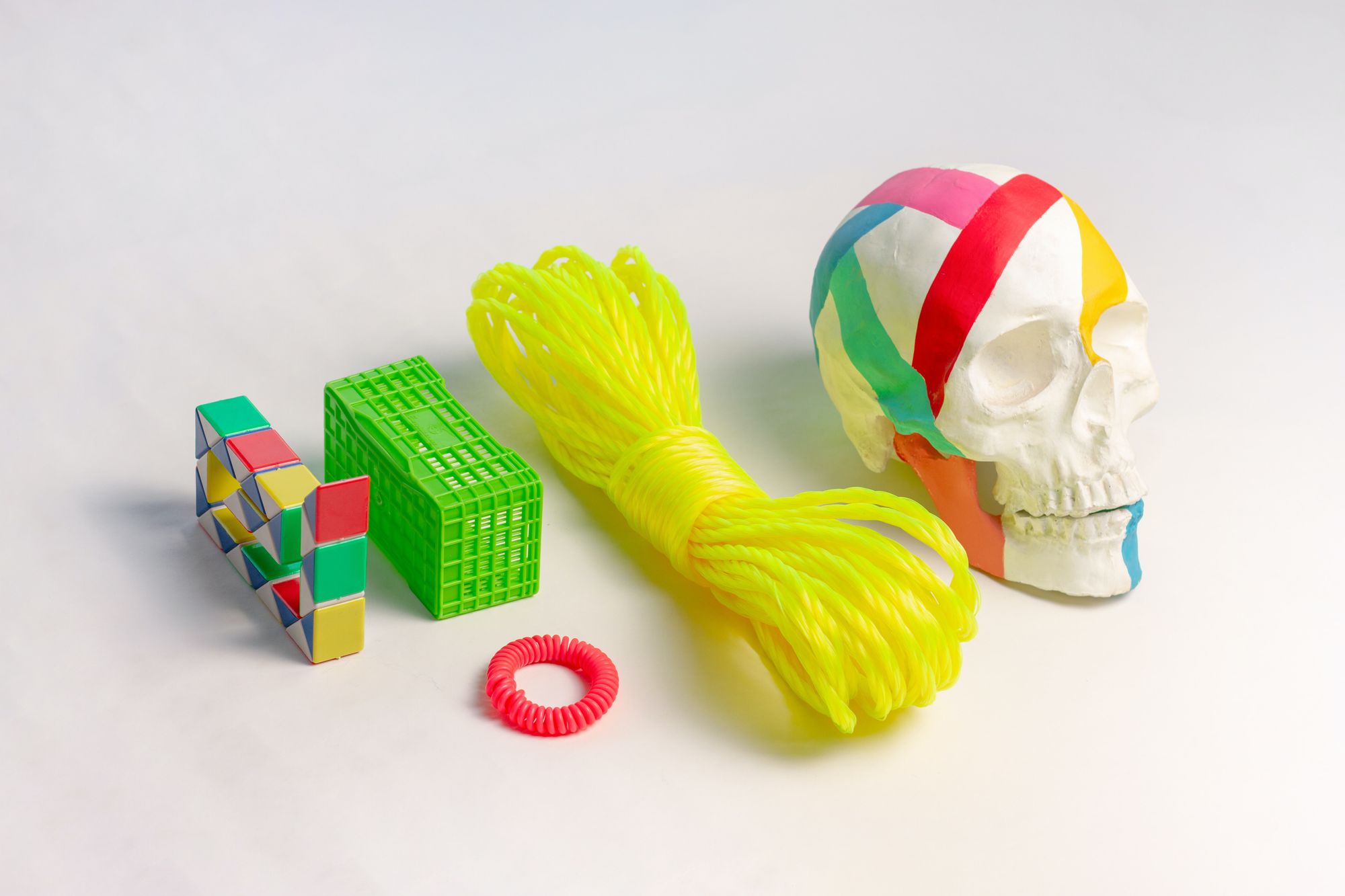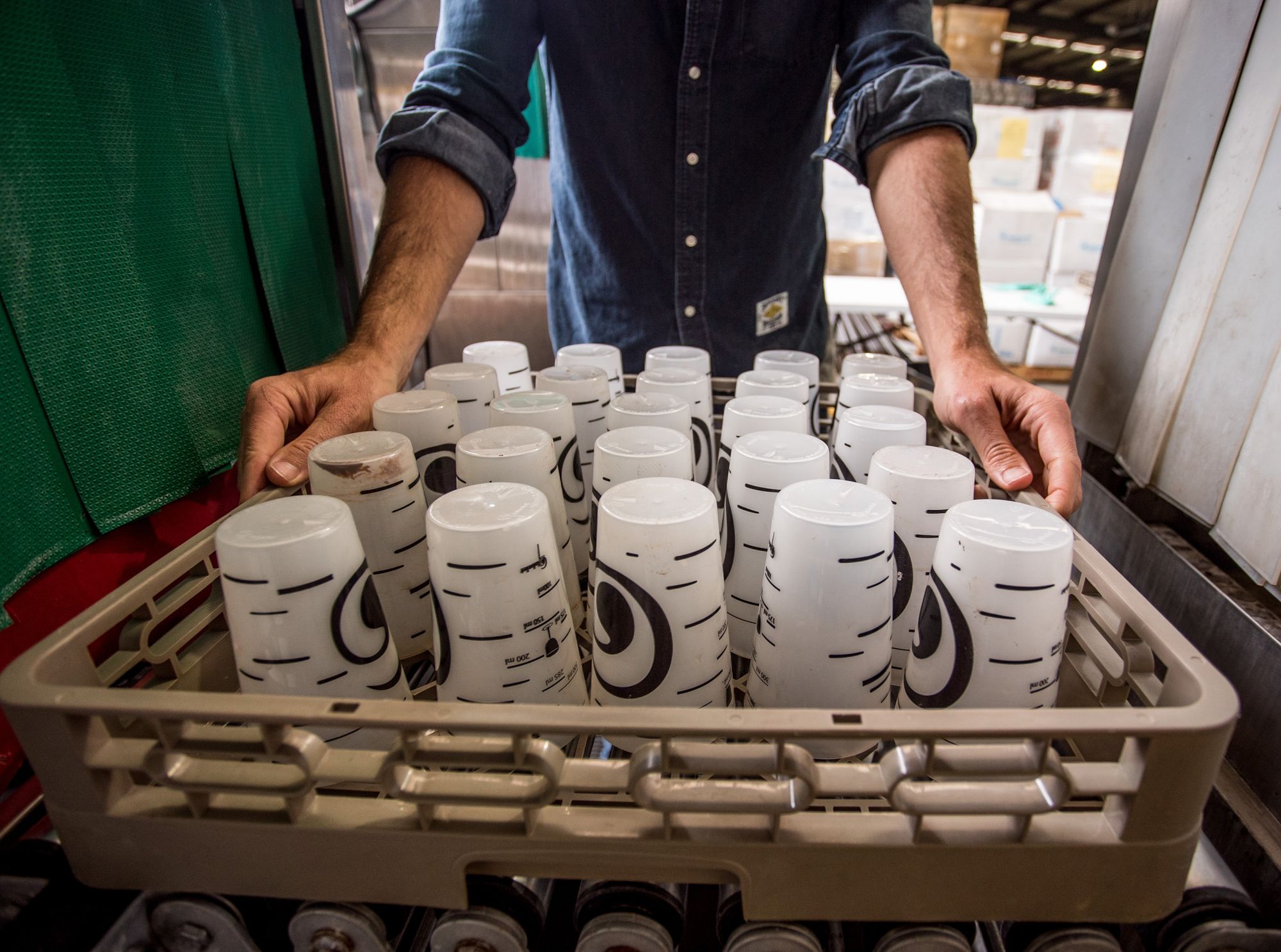Plastic manufacturing is an essential industry, with the United States being one of the largest producers of plastic in the world. However, with the increasing demand for plastic products, manufacturers face numerous challenges, such as maintaining production efficiency, reducing costs, and enhancing worker safety.
One solution to these challenges is the use of automation in plastic production. Automation can improve the accuracy and speed of manufacturing processes, reduce waste, and enhance the safety of workers.
According to recent reports, the global market for industrial automation, including robotics and other automation technologies, is expected to reach $350 billion by 2025, with the United States being the largest market for automation technologies.
The role of automation in plastic production cannot be overlooked, as it presents numerous benefits to manufacturers, including improved efficiency, increased productivity, and cost savings. The use of automation in plastic production processes can also enhance the quality and consistency of plastic products, making them more reliable and efficient in their intended applications.
However, while automation offers numerous benefits, it presents challenges, such as high initial costs, the need for skilled labor to operate and maintain automated systems, and concerns over job displacement.
Nevertheless, manufacturers can mitigate these challenges by carefully selecting the appropriate automation technology for their needs, investing in employee training programs, and implementing strategies to mitigate job displacement.

This article will explore the role of automation in plastic production, including the benefits, challenges, and strategies for successful implementation.
By understanding the role of automation in plastic manufacturing and the strategies for successful implementation, manufacturers can enhance their production efficiency, reduce costs, and improve worker safety while meeting the increasing demand for plastic products.
Here's what we shall cover in this post:
- Overview of Plastic Production Automation
- Types of Automation Used in Plastic Manufacturing
- Implementing Automation in Plastic Production: Key Considerations
- Advancements in Automation for Plastic Manufacturing
- Challenges of Implementing Automation in Plastic Production
- How Automation Can Improve Efficiency and Reduce Waste in Plastic Production
- The Impact of Automation on Plastic Production Workers
- Comparing Automated and Manual Plastic Production Processes
- Best Practices for Integrating Automation into Plastic Manufacturing Operations
- Conclusion
- Key Takeaways
Overview of Plastic Production Automation
Plastic production automation is using automated systems and machinery for manufacturing plastic products. It involves using computer-aided design, robotics, and other advanced technologies to streamline manufacturing and improve efficiency. Here are some key points to understand the overview of plastic production automation:
- Advancements in technology have led to significant improvements in plastic production automation. Computer-aided design (CAD) and computer-aided manufacturing (CAM) software enable engineers and technicians to design and test plastic products digitally before they are manufactured.
- Automation in plastic production also involves the use of robots to perform tasks such as material handling, injection molding, and assembly. Robots are highly precise and efficient, which leads to higher quality products and lower production costs.
- One of the primary benefits of plastic production automation is improved efficiency. Automated systems can operate 24/7 with minimal supervision, reducing the time it takes to manufacture products and lowering labor costs.
- Another benefit of plastic production automation is increased consistency and quality. Automated systems can perform tasks with higher precision than humans, resulting in more consistent products. This can reduce the number of defective products and improve customer satisfaction.
- Automation in plastic production also reduces the risk of workplace injuries. Robots can perform dangerous or physically demanding tasks, such as lifting heavy objects or working in high-temperature environments.
- The use of automation in plastic production can also be environmentally beneficial. Automated systems can reduce waste by using materials more efficiently and recycling scrap materials.
- Despite the benefits of plastic production automation, there are also some challenges to consider. The initial investment in automated systems and machinery can be expensive, and ongoing maintenance and training costs must also be factored in.
- Additionally, the use of automation can lead to job displacement for some workers. Companies need to implement strategies to support affected employees and provide training for new roles.
Benefits of Automation in Plastic Production
Automation has revolutionized the plastic manufacturing industry in several ways, significantly benefiting manufacturers. Here are some of the key advantages of automation in plastic production:
- Improved Efficiency: Automation can help to streamline the plastic production process, making it faster, more accurate, and more reliable. Robots and other automated systems can work around the clock without taking breaks or making errors, resulting in a more efficient production line.
- Reduced Labor Costs: By automating tasks that human workers previously performed, manufacturers can reduce labor costs significantly. This can also help to free up workers for more skilled tasks that cannot be automated, leading to a more productive workforce.
- Consistent Quality: Automated production processes can help ensure consistent plastic product quality. This is because robots and other automated systems can perform tasks with high precision, reducing the risk of defects and inconsistencies in the finished products.
- Enhanced Safety: Automation can also help to enhance safety in the plastic production process. By taking over tasks that are repetitive, hazardous, or require heavy lifting, robots, and other automated systems can reduce the risk of injury to human workers.
- Increased Output: Automated systems can work faster and more efficiently than human workers, allowing manufacturers to produce more plastic products in a shorter amount of time. This can help to increase output and meet customer demand more effectively.
- Greater Flexibility: Automated systems can be programmed to perform a wide range of tasks, making them more flexible than human workers. This means that manufacturers can easily switch between different products or production processes without retraining workers or making significant changes to the production line.
- Improved Data Collection: Automated systems can also help improve data collection in plastic production. By gathering data on various aspects of the production process, such as temperature, pressure, and speed, manufacturers can identify areas for improvement and optimize their processes for maximum efficiency and quality.
- Reduced Waste: Automation can help to reduce waste in the plastic production process. By using sensors and other advanced technologies, automated systems can detect defects and errors early on, preventing the production of faulty products and reducing waste.
Types of Automation Used in Plastic Manufacturing
Automation technology in the plastic industry has evolved to include various types of machinery, software, and hardware that enable the manufacturing process to run seamlessly. Here are the different types of automation used in plastic manufacturing:
Robotics: Robots are programmed machines that can perform various tasks with high precision and speed. In plastic manufacturing, robots are used for material handling, part assembly, and inspection.
The robots can be configured with sensors, cameras, and other equipment to detect and sort defective parts from good ones.
Injection Molding Automation: Injection molding is a popular method of plastic manufacturing. Automated injection molding machines are used for producing high-quality, consistent parts in large volumes.
These machines are equipped with sensors and monitoring systems that ensure accuracy, prevent defects and optimize production rates.
Extrusion Automation: Extrusion is another common method used in plastic manufacturing, where plastic is melted and forced through a die to form a particular shape. Automated extrusion equipment includes extruders, cooling systems, and cutting machines.
These systems can be programmed to control the flow, temperature, and cooling rates to produce precise, high-quality products.
Blow Molding Automation: Blow molding is a technique used to create hollow plastic objects. Automated blow molding machines are used to produce large volumes of bottles, containers, and other hollow products.
These machines are equipped with sensors and monitoring systems that ensure the product is formed correctly and with high precision.
Conveyors: Conveyors are automated systems used to move materials and products throughout the manufacturing process.
In plastic manufacturing, conveyors are used to transporting raw materials, finished products, and waste. Automated conveyor systems can be programmed to optimize the movement of materials, reduce labor costs, and improve safety.
Computer-Aided Design and Manufacturing (CAD/CAM): CAD/CAM software designs and manufactures plastic parts. The software allows designers to create 3D models of parts and simulate manufacturing processes to optimize production. This software can also be integrated with other automated systems to ensure accurate and efficient production.
Implementing Automation in Plastic Production: Key Considerations
Here are some key considerations to keep in mind when implementing automation in plastic production:
- Understand your production needs: Before implementing automation, it is crucial to understand the specific needs of your plastic production process. Identify the areas where automation can be most beneficial and prioritize these areas. Consider the products you produce, the volume of production, and the current production processes.
- Select the right technology: Several types of automation technologies are available for plastic production. Choose the technology that best fits your production needs. This includes robotic automation, conveyors, pick and place systems, and automated inspection systems. Each technology has its strengths and limitations, so selecting the technology that aligns with your production goals is important.
- Evaluate costs and ROI: Automation can be expensive, and the initial investment may be a significant challenge for some businesses. Consider the costs of purchasing and installing the technology and the potential ROI. Evaluate how quickly the technology will pay for itself in terms of increased productivity, reduced labor costs, and improved quality.
- Ensure compatibility with existing equipment: Automation technology needs to be compatible with existing equipment and processes. It is important to consider the integration of the new technology into the existing production line. Incompatibility can lead to downtime, lost productivity, and additional costs.
- Train employees: Automation will change the roles of employees in the production process. It is important to provide proper training to employees to ensure they are comfortable and competent with the new technology. The training should include the operation of the technology, troubleshooting, and maintenance.
- Ensure safety: Automation technology can increase safety in the production process and create new hazards. Ensure that the new technology meets safety standards and regulations and that employees are trained to operate it safely.
- Consider scalability: Consider the future growth of your business and the potential scalability of the new technology. Ensure that the technology can accommodate changes in production volume or new product lines.
Advancements in Automation for Plastic Manufacturing
Collaborative Robots
Collaborative robots, also known as cobots, are designed to work alongside human operators. These robots are designed with sensors and safety features to ensure they do not threaten human workers.
Cobots can perform a range of tasks, from assembling parts to packaging finished products.
Artificial Intelligence
Artificial intelligence (AI) has emerged as a powerful tool in automation, allowing machines to learn from experience and improve their performance over time.
In the plastic manufacturing industry, AI can be used to optimize production processes, reduce waste, and improve product quality.
3D Printing
3D printing has already transformed the manufacturing industry, and the plastic manufacturing sector is no exception. With 3D printing, manufacturers can produce complex designs with high precision and minimal waste.
Moreover, 3D printing can enable mass customization of products, which is not feasible with traditional manufacturing processes.
Internet of Things (IoT)
The IoT is a network of connected devices that can communicate with each other and share data. In the plastic manufacturing industry, IoT devices can be used to monitor the production process in real time, detect defects, and optimize production.
Moreover, IoT devices can be used to improve supply chain management by tracking the location and status of products as they move through the supply chain.
Virtual and Augmented Reality
Virtual and augmented reality technologies can be used in plastic manufacturing to provide immersive training for workers, visualize products in 3D, and simulate production processes.
These technologies can also be used to improve quality control by allowing workers to identify defects and errors more easily.
Machine Learning
Machine learning is a subset of AI that allows machines to learn from data and improve their performance over time. In the plastic manufacturing industry, machine learning can be used to optimize production processes, detect defects, and predict equipment failures.
Automated Guided Vehicles
Automated guided vehicles (AGVs) are mobile robots that can move materials and products around the factory floor. AGVs can be programmed to follow a predetermined path, avoiding obstacles and other hazards.
In the plastic manufacturing industry, AGVs can be used to transport raw materials to the production line, move finished products to the warehouse, and carry out other tasks that would otherwise require human labor.
Challenges of Implementing Automation in Plastic Production
Initial Investment Costs: One of the main challenges of implementing automation in plastic production is the initial investment cost.
Automated machinery and robotics are typically more expensive than traditional equipment, and the implementation process itself may require additional expenses such as infrastructure upgrades, software development, and employee training.
Maintenance and Repair: Automated machinery requires regular maintenance and repair to ensure optimal performance. These tasks can be complex and require specialized skills and training, which may be difficult to find or require additional investment.
Integration with Existing Systems: Automated machinery and robotics must be properly integrated with existing production systems and software to ensure seamless operation. This can be a challenge, particularly if the existing systems are outdated or incompatible with the new automation technologies.
Employee Resistance to Change: The implementation of automation in plastic production can be met with resistance from employees who may feel threatened by the potential loss of their jobs or the need for retraining.
Effective communication and engagement strategies are crucial to overcoming this challenge.
Cybersecurity Risks: The integration of automation technologies into production processes can increase the risk of cyber-attacks and data breaches. It is essential to implement robust cybersecurity measures to protect against these risks.
Quality Control: Automated processes can improve production efficiency and speed, but they can also introduce new challenges in quality control. Manufacturers must ensure that automated processes are rigorously tested and monitored to maintain high-quality standards.
Regulatory Compliance: Regulatory compliance is another challenge that manufacturers face when implementing automation in plastic production. The use of automated machinery and robotics may require additional safety and environmental regulations and compliance standards, which can be difficult to navigate and implement.
How Automation Can Improve Efficiency and Reduce Waste in Plastic Production
Here are some ways automation can improve efficiency and reduce waste in plastic production.
Accurate and Consistent Production: One of the most significant benefits of automation in plastic production is the ability to produce consistent and high-quality products.
With automation, manufacturers can precisely control the entire production process, ensuring that the output meets the required standards. Automated systems are designed to reduce variability, improve accuracy, and eliminate errors that may arise due to human intervention.
Reduced Material Waste: Another significant benefit of automation in plastic production is the ability to reduce material waste. Automated systems are designed to optimize material usage by ensuring that the right amount of material is used during production.
This reduces material waste, reduces production costs, and improves manufacturer profitability.
Improved Production Speeds: Automation technologies can significantly improve production speeds in plastic manufacturing. Automated systems can perform tasks much faster than human workers, reducing cycle times and increasing production rates. This, in turn, allows manufacturers to produce more products in less time, improving their overall efficiency and profitability.
Increased Equipment Utilization: With automation, manufacturers can improve equipment utilization by minimizing downtime and maximizing the uptime of their equipment.
Automated systems can perform routine maintenance tasks and identify potential equipment issues before they become significant problems. This results in increased equipment uptime and reduced downtime, leading to improved overall efficiency.
Enhanced Data Management: Automation technologies also allow for enhanced data management in plastic production. With automated systems, manufacturers can collect and analyze data in real time, providing them with valuable insights into their production processes.
These insights can be used to identify areas for improvement, optimize production, and reduce waste.
The Future of Automation in Plastic Manufacturing
- Increased Adoption of Collaborative Robots (Cobots): Cobots are designed to work alongside humans and are expected to be used more in the future. These robots are designed to help workers with repetitive tasks and improve efficiency. Cobots are also safer to work with as they are equipped with safety sensors that detect when humans are nearby.
- Predictive Maintenance: Predictive maintenance is the use of sensors and analytics to predict when a machine is likely to fail. This technology can help to prevent downtime and improve efficiency in plastic manufacturing.
- Cloud Computing: The use of cloud computing in plastic manufacturing can help to improve collaboration and efficiency. Cloud computing enables data to be shared and accessed from anywhere, allowing manufacturers to make quick decisions based on real-time data.
- Virtual Reality (VR) and Augmented Reality (AR): VR and AR are already being used in the plastic manufacturing industry and are expected to play a more significant role in the future. VR and AR can help manufacturers to simulate the production process and identify areas for improvement.
The Impact of Automation on Plastic Production Workers
Job Loss: As automation becomes more prevalent in plastic manufacturing, some manual labor tasks are becoming automated. This has led to job loss for some workers who were previously responsible for performing those tasks.
Automation has eliminated the need for workers in areas such as assembly, packaging, and inspection, reducing the overall workforce. This can have a significant impact on the workers who are displaced, leading to financial and emotional strain.
Changes in Job Responsibilities: The adoption of automation in plastic manufacturing has resulted in changes in job responsibilities for many workers. With machines taking over some tasks, workers need to be trained to operate, maintain, and repair the equipment.
This requires workers to have a different set of skills than what was previously required for the job. The need for advanced technical skills means that workers must be willing to learn and adapt to new technologies.
Improved Working Conditions: Automation has led to a significant improvement in working conditions for plastic production workers. Automating repetitive, physically demanding tasks exposes workers to fewer occupational hazards, reducing the risk of workplace injuries.
Workers no longer have to perform tasks that are detrimental to their health, leading to improved employee well-being and job satisfaction. Additionally, automation has created more comfortable and safer working environments, leading to better overall health outcomes for workers.
Increased Efficiency and Productivity: Automation has increased plastic manufacturing efficiency and productivity. Automated machines can perform tasks at a faster rate than human workers, reducing the time it takes to manufacture products.
This leads to an increase in output and a reduction in production costs. Increased efficiency and productivity also provide opportunities for manufacturers to meet growing customer demands and increase their market share.
Reduced Training Time: The use of automation in plastic production has reduced the amount of time required to train new workers. Machines can be programmed to perform tasks consistently and precisely, reducing the need for extensive training.
Workers can be trained to operate and maintain the equipment, ensuring the machines work at peak performance. The reduced training time also provides manufacturers with a competitive advantage by enabling them to get new products to market faster.
Cost Analysis of Automation in Plastic Manufacturing
Cost analysis is crucial to decision-making for any manufacturing plant, including plastic production facilities. As automation becomes more widespread in the industry, evaluating the cost-benefit ratio of implementing such technology is essential.
Here are some points to consider in a cost analysis of automation in plastic manufacturing:
- Initial Investment: The cost of implementing an automated system can be high. It involves purchasing, installing, and testing the new system and the necessary training for operators to use the technology. The initial investment will vary depending on the size of the facility and the type of automation used.
- Labor Costs: While the initial investment in automation may be high, it can result in long-term savings on labor costs. Automated systems can perform tasks faster and more efficiently than human workers, reducing the number of employees required. The system can also operate around the clock, minimizing downtime and the need for shift work.
- Maintenance Costs: Automated systems require regular maintenance and repair, like any machinery. It is essential to factor in the cost of maintenance, including spare parts, labor, and the cost of downtime when the system is offline for maintenance.
- Energy Costs: Automation systems can increase energy efficiency in plastic production. For example, robots can optimize material usage and reduce waste, which can reduce energy consumption. It is crucial to consider the energy savings and potential for reducing energy costs when evaluating the cost of automation.
- Return on Investment: It is essential to calculate the automation system's return on investment (ROI). The ROI is the amount of time it takes for the savings generated by the automated system to cover the initial investment cost. The ROI will vary depending on the size of the facility, the type of automation used, and the rate of adoption.
- Scalability: Another factor to consider is the ability to scale the automation system as production needs change. Choosing a system that can adapt to future changes in demand and production is essential.
- Regulatory Compliance: Regulations are continually changing in the plastic manufacturing industry, and it is essential to consider the cost of regulatory compliance. Automated systems can help ensure compliance with regulations and reduce the risk of penalties and fines.
- Competitive Advantage: Finally, it is essential to consider the competitive advantage that automation can provide. Implementing automation in plastic production can improve product quality, increase productivity, and reduce costs, which can help a company stay competitive in the market.
Comparing Automated and Manual Plastic Production Processes
Efficiency
Automated plastic production processes are generally faster and more efficient than manual processes. Automated processes can run 24/7 without the need for breaks, which means higher production rates and reduced downtime.
Machines can also perform repetitive tasks at a consistent rate, reducing errors and increasing productivity. Manual processes, on the other hand, rely on human workers who may tire or make mistakes, slowing down production and decreasing efficiency.
Quality
Automated plastic production processes are also more consistent, which can lead to better-quality products. Machines can perform the same task repeatedly without variation, ensuring that each product is made to the same high standard. In contrast, manual processes are more prone to human error, which can lead to inconsistencies in product quality.
Safety
Automated plastic production processes can be safer for workers, as they can reduce the risk of injuries caused by repetitive motions, heavy lifting, and exposure to hazardous materials.
Machines can also perform tasks in hazardous environments, such as working with high temperatures or toxic chemicals, without putting human workers at risk. In contrast, manual processes may require workers to perform physically demanding tasks or expose them to dangerous chemicals or materials.
Flexibility
Manual plastic production processes can be more flexible than automated processes, as human workers can adapt to changes in production needs more easily. Workers can perform different tasks depending on the production schedule, and they can make adjustments to the process if needed.
On the other hand, automated processes are designed for specific tasks and may not be as adaptable to changes in production needs.
Cost
Automated plastic production processes can be more expensive upfront, as they require investment in equipment and technology. However, they can lead to cost savings over time by increasing efficiency, reducing waste, and improving product quality.
Manual processes may be cheaper upfront, but they may be more expensive in the long run due to the need for more labor, increased downtime, and higher rates of error.
Maintenance
Automated plastic production processes require regular maintenance to keep machines running smoothly and prevent breakdowns. This can be time-consuming and costly, as it requires trained technicians and spare parts.
Manual processes may require less maintenance but may be more prone to breakdowns due to human error or wear and tear.
Best Practices for Integrating Automation into Plastic Manufacturing Operations
The following are some best practices for integrating automation into plastic manufacturing operations:
- Define goals and expectations: Before implementing automation, it's essential to define clear goals and expectations. This will help the team identify the areas where automation is most needed and provide a clear understanding of the expected outcomes.
- Analyze current processes: Analyze the current plastic manufacturing processes and identify the areas that require automation. It's important to prioritize the processes that are time-consuming, repetitive, and prone to errors.
- Choose the right automation technology: Selecting the right automation technology can significantly impact the success of integrating automation. It's crucial to consider factors such as cost, ease of integration, flexibility, and scalability.
- Train employees: Automation can lead to significant changes in the way plastic manufacturing operations are conducted. Employees must receive adequate training to ensure they understand how to operate and maintain the new equipment.
- Conduct a pilot run: Conducting a pilot run is a crucial step in the automation integration process. It allows the team to identify and fix any potential issues before full-scale implementation.
- Monitor and analyze performance: It's essential to monitor and analyze the performance of automated processes continuously. This will help the team identify any improvement areas and ensure the automation technology is operating efficiently.
- Continuously improve: Continuous improvement is key to maximizing the benefits of automation in plastic manufacturing. The team should regularly evaluate the processes and identify areas for improvement.
- Maintain communication: Maintaining open communication between the automation team and other departments is crucial to ensure the integration process is successful. It will help to identify potential issues and provide timely solutions.
- Embrace change: Integrating automation into plastic manufacturing operations will bring significant changes. It's important to embrace change and have a positive attitude toward the new processes.
- Ensure safety: Safety is a top priority when integrating automation into plastic manufacturing operations. The team should ensure the equipment is safe to use and follow all safety protocols.
How Deskera Can Assist You?
Deskera MRP allows you to closely monitor the manufacturing process. From the bill of materials to the production planning features, the solution helps you stay on top of your game and keep your company's competitive edge.

Deskera ERP and MRP system can help you:
- Manage production plans
- Maintain Bill of Materials
- Generate detailed reports
- Create a custom dashboard
Deskera ERP is a comprehensive system that allows you to maintain inventory, manage suppliers, and track supply chain activity in real-time, as well as streamline a variety of other corporate operations.
Deskera Books enables you to manage your accounts and finances more effectively. Maintain sound accounting practices by automating accounting operations such as billing, invoicing, and payment processing.
Deskera CRM is a strong solution that manages your sales and assists you in closing agreements quickly. It not only allows you to do critical duties such as lead generation via email, but it also provides you with a comprehensive view of your sales funnel.
Deskera People is a simple tool for taking control of your human resource management functions. The technology not only speeds up payroll processing but also allows you to manage all other activities such as overtime, benefits, bonuses, training programs, and much more. This is your chance to grow your business, increase earnings, and improve the efficiency of the entire production process.
Conclusion
Automation is playing an increasingly significant role in the plastic manufacturing industry. Automation technologies can help improve efficiency, reduce costs, enhance product quality, and enhance worker safety by minimizing exposure to hazardous substances.
Companies embracing automation in plastic production will likely be more competitive and profitable in the long run. While some initial costs may be associated with implementing automation, the long-term benefits will likely outweigh these costs.
However, companies must also consider the potential impacts on their workforce and take steps to ensure that workers are properly trained and have the skills required to operate and maintain automated systems.
Additionally, companies should ensure that automated systems are designed with safety in mind and that they comply with all relevant regulations and standards. Advanced technologies such as artificial intelligence and machine learning are likely to become increasingly important in plastic manufacturing, as these technologies can help optimize production processes and improve product quality.
Overall, the adoption of automation technologies is likely to be a key factor in the ongoing evolution of the plastic manufacturing industry, and companies that are able to leverage these technologies effectively are likely to be at a significant advantage over their competitors.
Key Takeaways
- Automation technology in plastic production can enhance efficiency, productivity, and quality.
- Automated systems can improve the accuracy and precision of plastic production processes, leading to more consistent and reliable products.
- Robotics and artificial intelligence (AI) are increasingly used in plastic production for sorting, packing, and quality control tasks.
- Automation can reduce the need for human labor in dangerous and repetitive tasks, leading to a safer work environment for employees.
- The use of automation in plastic production can reduce costs and increase profits for manufacturers.
- Automated systems can also reduce waste and increase sustainability by optimizing material usage and reducing errors.
- Automation can enable plastic production to be more flexible and adaptable to changes in demand, allowing for more agile manufacturing processes.
- Integrating automation technology can be challenging and requires significant equipment, software, and personnel training investment.
- The implementation of automation must be carefully planned and executed to avoid potential technical issues and disruptions in production.
- Automation in plastic production can lead to a shift in the skills required of workers, with a greater need for expertise in technology and programming.
Related Articles













